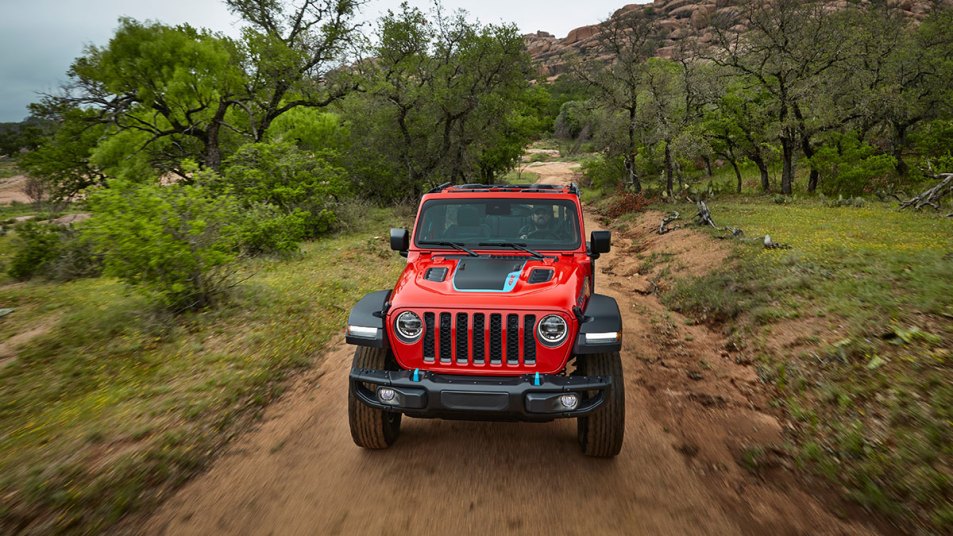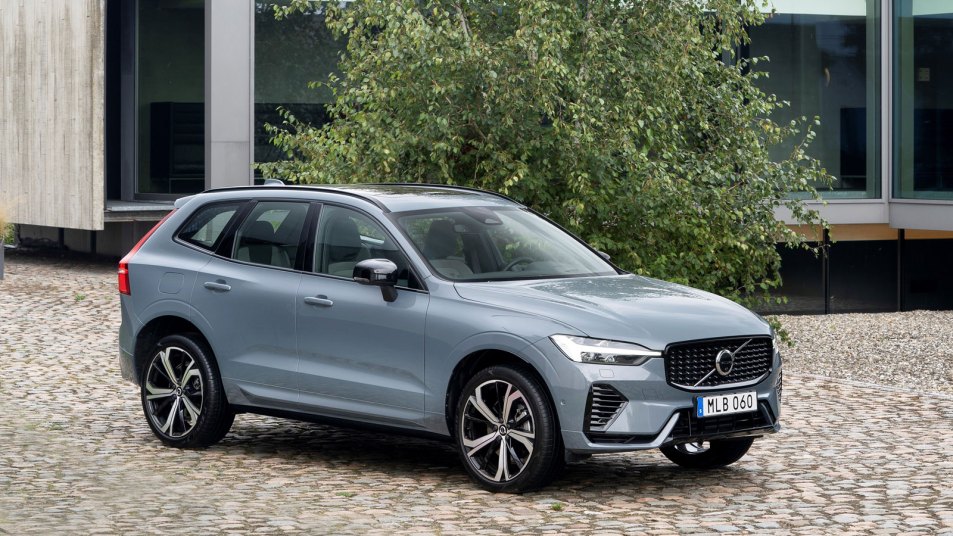- 2WD comes standard in most new vehicles
- 4WD brings impressive off-road ability and hauling utility
- Most SUVs and some minivans and sedans are offered with an AWD system that operates in the background
- AWD is not meant for towing or for serious off-road use
If you’re looking for a new car, you’ve probably run across a simple fact: Some cars are 2-wheel drive, while others are 4- or all-wheel drive. So what’s the difference? Should you get 4WD to be safe? Can you use 2WD in the snow?
We’ll explain the basics of each system and provide the optimal usage for each one.
What is 2WD?
A 2-wheel-drive (2WD) car is just what it sounds like: only two of the car’s wheels actually receive power. The other two are essentially along for the ride, though having four wheels on the ground obviously makes the car a lot more stable than if there were just three. (See: that tricycle you toppled over in your driveway when you were still in diapers).
Most new vehicles come standard with 2WD, though which two wheels receive that power varies by what the manufacturer intended for the car to do.
Sedans, minivans, and crossover SUVs not aimed at serious towing or off-road use (vehicles like the Toyota RAV4) are typically front-wheel drive (FWD). The front wheels steer and accelerate, which may seem like a lot of work. However, an FWD car can weigh less than a rear-wheel-drive (RWD) vehicle, and it drives better in snow. More on that in a bit.
RWD, predominant into the mid-1980s, is now generally reserved for higher-end and sportier cars, as well as pickups and off-road-oriented SUVs.
Most new passenger cars come standard with FWD because it typically results in improved fuel efficiency. There is less driveline loss, or wasted energy, in short, with an FWD car because the engine and drive wheels are close to one another. Additionally, the engine pressing down on the front wheels helps with traction, especially in the snow.
Don’t write off an RWD car, though. Power sent solely to the rear wheels results in more neutral, balanced handling that makes cars like a BMW 3-Series more fun to drive than a Toyota Camry. Today’s RWD cars are better in inclement weather than ever before. That is due largely to efficient traction control systems and vast leaps forward in tire technology. Still, FWD definitely has the upper hand when it comes to deeper snow.
What is 4WD and How Does it Work?
Four-wheel-drive is a catchall term for two different types of systems that sound similar but actually work quite differently in practice.
A conventional 4WD system such as that seen in a pickup truck or an off-road SUV along the lines of a Toyota 4Runner or Jeep Wrangler typically has a 2WD mode for normal dry pavement use. Systems such as Ford’s ControlTrac or Jeep’s Selec-Trac also include an automatic 4WD mode suitable for use on dry or wet pavement.
From there, these systems typically also include a slippery terrain-only 4WD mode that locks the axles together (meaning the front and rear wheels turn at the same speed) which can result in serious driveline damage if engaged on the pavement. A low-range use for ultra low-speed off-roading or tugging a boat out of a lake is typically included.
These systems send power primarily to the rear wheels on the pavement but can adjust as needed without any driver input. Simpler systems use gears that detect slip and transfer power around. More advanced systems make extensive use of various electronic sensors.
A 4WD system results in impressive off-road ability and hauling utility. But it’s typically found in vehicles that use a lot more fuel, such as pickups and bulky SUVs.
RELATED: Does Your Car Need Winter Tires?
What is AWD and How Does it Work?
Far more common today is an all-wheel-drive (AWD) system. Most SUVs and some minivans and sedans are offered with an AWD system that operates in the background. Power is typically supplied primarily to the front wheels in these setups. Then, it gets sent to the rear wheels as needed.
AWD systems usually require no driver intervention. The systems operate seamlessly and silently underneath. Occasionally, automakers will offer something along the lines of a “4WD Lock,” designed to be helpful in deep snow. But that’s as complicated as these systems get for most use.
The upside to AWD comes in its simplicity: There’s nothing to do other than hit the road. But AWD is not meant for towing or for serious off-road use.
Which is Better for You?
If you live in a sunny place and don’t plan to go skiing or venture down an unpaved road, a vehicle with FWD or RWD will likely work just fine for you. Even then, carefully selected tires rated for winter duty will go a long way toward instilling more confidence.
A vehicle isn’t automatically safer if it’s AWD or 4WD. It mostly comes down to driver skills. Anyway, 4WD SUVs and trucks sit up higher off the ground. That makes them handle worse than lower-riding SUVs or sedans, no matter which wheels are driven.
The big thing to remember is that AWD or 4WD effectively gets a vehicle moving away from a stop and sustaining momentum in snow or wet conditions. But it will not help you stop any quicker or more safely.
Still, we can’t blame you for shopping for an AWD or 4WD vehicle if you live in an area that sees more than occasional rain or a climate with regular snowy conditions.
Most drivers will be just fine with an AWD sedan, minivan, or SUV. A 4WD model is best reserved for those who plan to trek down muddy roads or through especially deep snow with regularity.
See used Audi AWD/4WD models for sale
See used BMW AWD/4WD models for sale
See used Cadillac AWD/4WD models for sale
See used Chevrolet AWD/4WD models for sale
See used Ford AWD/4WD models for sale
See used GMC AWD/4WD models for sale
See used Jeep AWD/4WD models for sale
See used Land Rover AWD/4WD models for sale
See used Lexus AWD/4WD models for sale
See used Mercedes-Benz AWD/4WD models for sale
See used RAM AWD/4WD models for sale
See used Toyota AWD/4WD models for sale
Related AWD Articles:
See all the AWD and 4WD SUVS and Trucks available to buy today.













what kind is more suitable for Melbourne climate?
Pretty good article on a very complex topic. The AWD and 4WD systems are also designed differently for each auto manufacturer. For example : The Rubicon option for Jeep Wrangler allows an owner to go from standard 4WD which engages one wheel on each axle to locked differentials which gives power to all four wheels. This allows an amazing amount of traction in off road situations but makes a vehicle difficult to steer.
I have a 2009 Toyota Camry that has three different drive settings, four wheel drive, three wheel, and two wheel. I do most of my driving on freeways filled with idiots who can’t handle reading a speed limit sign, and I’ve nearly been sideswiped multiple times on the way to and from work, would I be fine using two wheel drive to save gas, or would that decrease my control over my car?
Is a 4wheel drive the same as a 4×4, and does a 4wheel drive use more gas than a 2 wheel drive
4wheel is the same as 4×4. and 4wheel does use more gas than 2wheel drive.
how fast can you drive in 4 wheel drive
Good to know because I thought AW drive was the same thing as 4W drive. I thought it was just a new name for it. I just traded my Cadillac in for a Chevy Equinox LS AW V6. So far it’s using less gas then my Caddy did that was also a V6.
Why are there no people talking about driving through creeks, up sides of hills and the more important stuff that city folk dont need…. most people i know have never been off road or got mud under their bonnet…. i want to know what’s the best for off road…. isnt that why you buy these cars in the first place ?!!! not the mums driving kids to school in the porche 4wd that will never get scratches up the sides, or have to fold their side mirrors in.. really useless for people that want to know gritty info…..
Well if you truely off road then you know 4×4 is best for that ..
ALL WAYS ABOUT THE DRIVE TRAIN
BECAUSE I LIVE WHERE IS SNOW RAIN EVERYTHING ALL KIND OF WEATHER
I ALWAYS LIKED A AWD SUV
AWD IS BEST 4 ME
This was helpful. Thank you.
When you shift into 4 wheel high one of your front tires are looking for best traction and your back one if the tires is looking for best traction so you really have a two wheel drive but they are using all 4 wheels like a all wheel drive but it uses two wheels instead of one .A all wheel drive uses just one wheel to find the best traction that is why four wheel drive is better in real bad weather or off roading and plus if you get into a real tough situation you can shift into 4wheel low and all 4 wheels will turn but you can only use at low speeds usually under 25 mph
What does suv/crossover mean?
PART suv part Van most likely .
I find this a very informative article.
I own both AWD and 4×4. I have News for this author, AWD is much better than 4×4 in the snow. 4×4 only gets torque to two wheels, AWD gets torque to all wheels but varies based on the conditions. When it’s real slick I take the AWD anyday. 4×4 is better at low speed mudding and off road.
your reply is vague.
what do u mean ‘4×4’, gets torque to 2 wheels?
4×4’s with a differential lock option get torque to all 4.
I’ve lived in the snowbelt my hole life and have always gotten around fine with a 2wd car or truck, this is the first year I bought a 4×4 truck. That said I think every driver should learn to drive with rear drive vehicle. It will teach you how to drive from the beginning.
Something that this article didn’t mention in the AWD vs 4WD that could be why it said that 4WD is better in snow. I have a friend that lives in Canada and was driving his AWD car up a snowy hill. When the computer sensed the wheel spin and put power to the non slipping wheels, the change in torque actually caused the car to start to skid until he reacted by letting up on the gas thus recovering from the skid. This doesn’t happen in 4WD because the power to the wheels is constant when in 4WD. They could have explained this, if that’s why they made their statement.
Do u mean FWD?
This is a poorly written article.
I bought an SUV switch front wheel drive will I have any problem driving the highway with front wheel drive
When in four wheel drive it is indeed true that “all four wheels spin at the same time”. All four wheels spin at the same time on any vehicle with four wheels, however. Only two wheels receive torque on a four wheel drive vehicle at any one time. There is very little useful information in this article.
Your forgetting about truck with posi traction rear ends. Many truck have limited slip rear ends and both rear wheels are “driven”.